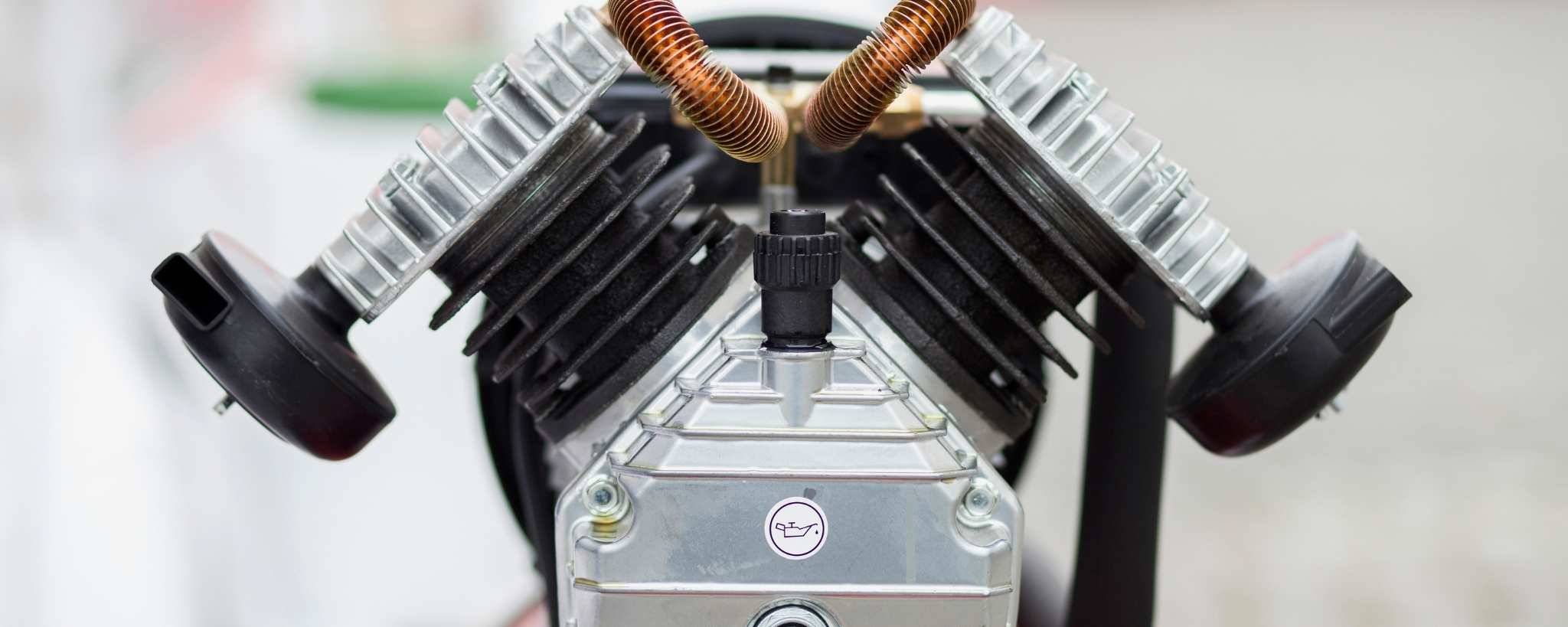Best Air Compressor for Car Detailing: Top Picks for 2026
What is the best air compressor for detailing cars? Compare top 2026 models with expert tips on CFM, PSI, and noise for the best results.

Written by:
Parham Koukia
Reviewed By:
Editorial Team
Published: September 12, 2025
Updated: January 02, 2026
Use AI to summarize this article:
Air compressors transform car detailing by powering tools that blast away gritty road salt from wheel wells, dislodge sticky debris from cupholders, and dry water from tight crevices.
For professional detailers, they’re as important as a microfiber towel, cutting cleaning time and elevating quality. Whether you’re a mobile detailer working out of a van or operating a shop, the right compressor means faster jobs and happier clients.
This guide compares top models of air compressors to help you choose one that fits your needs, based on our use and user insights.
Top 5 Air Compressors for Car Detailing in 2026
After analyzing performance, portability, and user feedback, here are the top air compressors for car detailing, tested for tasks like blowing out vents or powering Tornadors.
1. California Air Tools 8010: Best for Quiet Operation
- Capacity: 8 gallons
- Power: 1.0 HP motor
- CFM: 2.2 at 90 PSI
- Noise: 60 dB
- Weight: 48 lbs
- Price: ~$250

The California Air Tools 8010 is a favorite for its whisper-quiet operation, ideal for residential jobs. Its quick recovery time supports short bursts of cleaning, like blasting dust from dashboard vents. In tests, it ran a 4 Cubic Feet per Minute (CFM) tool for 1 minute 13 seconds before dropping below 50 Pounds per Square Inch (PSI).
Pros: Ultra-quiet, lightweight, durable oil-free pump.
Cons: Lower CFM limits are used with high-demand tools.
Best For: Detailers prioritizing client comfort in noise-sensitive areas.
2. PORTER-CABLE C2002: Best for Portability
- Capacity: 6 gallons
- Power: 0.8 HP motor
- CFM: 2.6 at 90 PSI
- Noise: 82 dB
- Weight: 30 lbs
- Price: ~$150

This pancake-style compressor is a go-to for mobile detailers. Its compact design fits easily in a van, and its low weight makes it a breeze to carry. It powered a Tornador for 10 seconds of continuous cleaning in our tests, perfect for quick interior jobs.
Pros: Lightweight, affordable, low maintenance.
Cons: Limited airflow for heavy tools, noisier than competitors.
Best For: Beginners or detailers with small setups.
3. DEWALT DWFP55126: Best for Power
- Capacity: 6 gallons
- Power: 0.9 HP motor
- CFM: 2.6 at 90 PSI
- Noise: 75 dB
- Weight: 30 lbs
- Price: ~$200

The DEWALT delivers robust performance for demanding tools. It ran a 6 CFM tool for 35 seconds in tests, making it ideal for polishers or blow guns. Its oil-free design reduces upkeep, and dual outlets support two tools simultaneously.
Pros: High CFM, durable, user-friendly controls.
Cons: Heavier than some, moderately loud.
Best For: Detailers needing power for multiple tools.
4. Craftsman CMEC6150K: Best for Versatility
- Capacity: 6 gallons
- Power: 0.8 HP motor
- CFM: 2.6 at 90 PSI
- Noise: 80 dB
- Weight: 32 lbs
- Price: ~$180

With a large handle and rubber feet for stability, this compressor excels in both shop and mobile settings. It supports interior and exterior tasks, like blowing out seat stitching or drying trim. Users praise its quick recovery for steady workflows.
Pros: Versatile, stable, oil-free pump.
Cons: Average build quality, not ideal for high-pressure tasks.
Best For: Detailers handling varied tasks.
5. BOSTITCH BTFP02012: Best Budget Pick
- Capacity: 6 gallons
- Power: 0.9 HP motor
- CFM: 2.6 at 90 PSI
- Noise: 78 dB
- Weight: 29 lbs
- Price: ~$140

Affordable yet reliable, this compressor offers solid performance for budget-conscious detailers. Its oil-free pump minimizes maintenance, and it handled a 5 CFM tool for 30 seconds in tests, suitable for blowing out door jambs or inflating tires.
Pros: Cost-effective, lightweight, compact.
Cons: Not suited for heavy-duty tools.
Best For: Detailers starting out or on a tight budget.
Comparison Table for Air Compressors
This table helps you quickly compare key specs to match your detailing needs, whether you prioritize silence, power, or cost.
| Compressor | Tank Size | CFM @ 90 PSI | PSI | Noise (dB) | Weight (lbs) | Price |
|---|---|---|---|---|---|---|
| California Air Tools 8010 | 8 gal | 2.2 | 120 | 60 | 48 | ~$250 |
| PORTER-CABLE C2002 | 6 gal | 2.6 | 150 | 82 | 30 | ~$150 |
| DEWALT DWFP55126 | 6 gal | 2.6 | 165 | 75 | 30 | ~$200 |
| Craftsman CMEC6150K | 6 gal | 2.6 | 150 | 80 | 32 | ~$180 |
| BOSTITCH BTFP02012 | 6 gal | 2.6 | 150 | 78 | 29 | ~$140 |
Related Article: Best Car Interior Cleaners
Key Factors to Choose the Best Air Compressor for Car Detailing
Selecting an air compressor involves balancing portability, power, and noise. Here’s what matters most, based on industry needs.
Tank Size and Portability for Mobile Detailers
A 5-20-gallon tank suits most detailing tasks, offering enough air for tools like Tornadors without taking up excessive space in a van.
For example, a 6-gallon compressor provides about 10-15 seconds of continuous use at 5 CFM, ideal for short bursts of cleaning. Lighter models (under 80 lbs) with wheels, like the PORTER-CABLE C2002, are easier to transport to client sites.
If space is tight, vertical tanks save room while maintaining capacity.
CFM and PSI: Powering Your Tools
CFM and PSI determine a compressor’s ability to run tools. Most detailing tools, like Tornadors, require 5-6 CFM at 90 PSI. Higher CFM ensures consistent airflow for pneumatic polishers or blow guns, while 120 PSI covers most tasks without overkill. For instance, a 4.5 CFM compressor can power a Tornador for interior cleaning but may struggle with heavy-duty tools like impact wrenches.
Noise Levels for Client Comfort
Loud compressors can disturb clients, especially in residential areas. Models like the California Air Tools 8010, rated at 60 decibels, allow you to work without drowning out conversation.
Real-world tests show noise levels vary: a Husky 4.5-gallon model hit 76 dB at 1 foot, while a Fortress 26-gallon stayed quieter at 68 dB.
Choose under 80 dB for a professional, client-friendly experience.
Oil-Free vs. Oiled Compressors
Oil-free compressors, favored by most of the professional detailers, prevent oil contamination in upholstery or paint. They’re low-maintenance but may be noisier.
Oiled compressors, with an oil separator, are quieter and more durable but require regular upkeep.
A detailer on Reddit noted their oiled compressor lasted years with minimal noise, thanks to a quality separator. For most, oil-free models like the BOSTITCH BTFP02012 balance convenience and cleanliness.
Real-World Performance: What Detailers Say
Detailers on forums like Reddit emphasize Tornador compatibility, recommending 5-6 CFM at 90 PSI for optimal performance.
A user praised a 10-gallon California Air Tools compressor for its quiet operation with a Tornador, though they wished for a 20-gallon tank for longer runtime.
YouTube tests showed smaller tanks (4.5-6 gallons) deliver 25-38 seconds of runtime at 5-6 CFM, while larger 26-gallon models like the Fortress lasted over 2 minutes.
Noise tests confirmed the California Air Tools at 60-68 dB, ideal for residential work, while the Ridgid 4.5-gallon hit 88 dB, better suited for shops.
These insights highlight the trade-off between portability and capacity.
Tips to Optimize and Maintain Your Air Compressor
Here’s what I recommend to get the most out of your compressor:
- Use Short Hoses: A 10-15 foot hose reduces pressure loss, ensuring consistent airflow for tools like air blowers.
- Plan Tasks: Alternate between blowing out vents and drying trim to give the compressor recovery time, especially with smaller tanks.
- Adjust PSI: Set 75-90 PSI for Tornadors to avoid damaging delicate surfaces.
- Combine with Vacuums: Use a vacuum alongside a blow gun to capture dislodged debris, speeding up interior cleaning.
- Drain Moisture Daily: Prevent rust by draining the tank after each use, especially in humid climates.
- Check Hoses and Fittings: Inspect for wear to avoid leaks that reduce performance.
- Clean Air Filters: Replace or clean filters monthly to maintain airflow and protect the pump.
- Store Properly: Keep the compressor in a dry, secure spot to prevent damage during transport.
FAQs About Air Compressors for Car Detailing
How Much PSI for an Air Compressor?
Car detailing air compressors typically require 90 to 150 PSI to operate tools like air blow guns, vacuums, and polishers efficiently. A compressor with 5+ CFM at 90 PSI is ideal for consistent performance. Higher PSI may be needed for heavy-duty detailing tasks.
What size air compressor do I need for car detailing?
A 5-20 gallon tank works well for normal car detailing services, providing enough air for most tools without taking up too much space.
How much psi air compressor do I need to paint a car?
To paint a car, you need an air compressor with 25 to 30 PSI for base coats and up to 40 to 50 PSI for clear coats. HVLP spray guns typically require 10 to 14 CFM at 40 PSI. Ensure consistent pressure for even paint application.

Parham Koukia
Lead Car Detailer / Operations Manager
With nearly 15 years of hands-on detailing experience, Parham has become a trusted authority in the auto care world. His work is regularly spotlighted in leading outlets like CNN, GoBankingRates, and Family Handyman. Parham likes to share his knowledge to offer in-depth tips on equipment selections, seasonal car care, and some secret car cleaning tips used by detailers in the real world!
Read more
